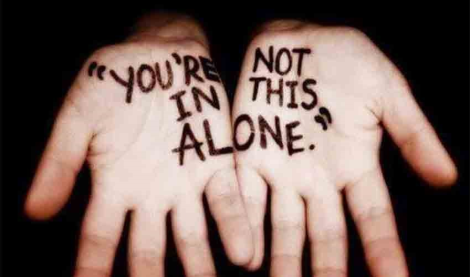Known locally as paramilitary punishment attacks (PPA) or acts of intimidation, these are threats or acts of violence usually carried out on young men. It is claimed they are undertaken to ‘punish’ them for acts of antisocial behaviour. Typically, it is assumed that they are undertaken as responses to persistent criminal activity such as joyriding or drug dealing.
Acts of intimidation and PPA are not a new phenomenon; they have been a consistent feature of Northern Irish society throughout the 30 years of the troubles (Knox, 2001). However, in the early days of the Northern Ireland ceasefire, there was a striking increase in the number of paramilitary-style beatings and forced exiles (Eriksson, 2009). This rise presented a significant challenge to the newly formed Stormont Assembly, as paramilitary activity of this kind was a clear breach of the Mitchell Principles, which set out the terms for the peace treaty. However, the assembly were struggling to maintain an already fragile ceasefire.
Despite the widespread condemnation of such violence, it was also suggested there is a degree of underlying support for it within communities, who feel it can curtail the anti-social activities of some individuals within the community (Hamill, 2011). Perhaps, as a result, there was a sense that the community would accept certain forms of violence in the interest of politically moving forward. Around this time the term ‘imperfect peace’ came into use, acknowledging that not all violence had stopped.
In some cases, the men had said that they would rather
die than let the paramilitaries injure them. The records
showed that some of these men sought help from
their GP and mental health services.
As time has gone on, these types of violent attack have continued and now almost twenty years after the cease-fire, young men continue to maimed and permanently disabled in Northern Ireland as so-called ‘punishment’ for their behaviour. In 2014 estimates suggested there were two of these types of attack every week and the Northern Ireland Human Rights Commission (2013) publicly stated they were concerned about ‘the worrying levels of paramilitary-style attacks’. Until recently, with the exception of the occasional media story detailing particularly vicious attacks, little attention has been paid to the victims of these crimes. Some of these news reports have even linked cases of intimidation to deaths by suicide (Tomlinson, 2007). However, there has been a lack of systematic research exploring the potential link between this form of political violence and death by suicide.
That changed when we undertook a study of all suicides in Northern Ireland that had taken place over a two-year period, by exploring Coroner’s data and medical records. In this research, we uncovered nineteen cases in which men who went on to take their own life had been subjected to or threatened with paramilitary style beatings prior to their death. In some cases, the men had said that they would rather die than let the paramilitaries injure them. The records showed that some of these men sought help from their GP and mental health services. However, health care professionals struggled to assess and respond to these issues as in most cases the men were not assessed to be mentally ill but were noted to be experiencing an entirely appropriate response to the threats they faced.
Our evidence also showed the men were often too scared to talk to their families about what was going on, in some cases actively concealing what was going on to protect their loved ones from the threats of violence. We know from other studies that these men are often reluctant to contact the police because they may be worried about increasing the risk of further intimidation. Overall, our research showed these men were so scared of the threats they faced that they became entrapped, hopeless and defeated. All of which made them particularly vulnerable to suicide.
As our research shows, the campaign is vital, because this violence has devastating potentially lethal consequences for some of the men who are threatened, showing this not just an ‘imperfect peace’ but for some individuals a very dangerous one.
Recently, there has been increasing awareness of the horrific physical and psychological consequences this type of violence can have on young men and their families. A major BBC documentary - Shot by My Neighbour, by Stacey Dooley brought mainstream attention to the issue, featuring first-hand accounts from men who had been subjected to assaults and their families who had been caught up in the aftermath. Furthermore, at the end of 2018, a new campaign called Ending the Harm was launched, it seeks to tackle the issue head-on by targeting public perceptions of the violence with hard-hitting adverts on mainstream TV and billboards in Northern Ireland.
Through this campaign we can finally start to break down the idea there are acceptable levels of violence that will be tolerated by Northern Irish society and publicly tackle the notion that paramilitaries can operate an informal criminal justice system that will go unchallenged with no legal or political consequences. As our research shows, the campaign is vital, because this violence has devastating potentially lethal consequences for some of the men who are threatened, showing this not just an ‘imperfect peace’ but for some individuals a very dangerous one. Hopefully, with the work of the campaign, we will finally start towards a peace that works for us all.
References
Erikssion, A. (2009). Justice in transition: Community Restorative Justice in Northern Ireland. Cullompton: Willan Publishing.
Hamill, H. (2011). The Hoods: Crime and Punishment in Belfast. Princeton: University Press.
Northern Ireland Human Rights Commission (2013). http://www.nihrc.org/news/detail/nihrc-reports-to-un-committee-against-torture. Accessed11th June 2017
Knox (2001). The ‘Deserving’ Victims of Political Violence: ‘Punishment’ Attacks in Northern Ireland. Criminology and Criminal Justice. Volume: 1 issue: 2, page(s): 181-199.
Tomlinson T. (2007). The trouble with suicide Published by Department of Health, Social Services and Public Safety (Northern Ireland)
Take your learning further
-

Making sense of mental health problems
Learn more to access more details of Making sense of mental health problemsOver the past century there has been a radical shift in responses to people who experience mental health problems. In this free course, Making sense of mental health problems, you will learn about how key perspectives in the field have made sense of mental health problems. By directly relating key perspectives to a case study, you will reflect ...
-

Understanding mental capacity
Learn more to access more details of Understanding mental capacityThis free course, Understanding mental capacity, covers the principles and criteria underpinning the assessment of mental capacity and decision making in the UK.
-

Challenging ideas in mental health
Learn more to access more details of Challenging ideas in mental healthTake a new and different look at mental health. This free course, Challenging ideas in mental health, invites you to think differently about life's dilemmas by taking account of the views of all concerned, especially people experiencing mental distress. It explores ideas and practice in mental health, and will appeal to a wide range of people.
Read more articles like this
-

What can I do about my mental health when I don’t have the support I need?
Read now to access more details of What can I do about my mental health when I don’t have the support I need?What can you do if you're not comfortable talking about mental health issues with your peers? Dr Jonathan Leach and Dr Mathijs Lucassen set out six ways of getting the support you need.
-

Mental Health Awareness Week
Read now to access more details of Mental Health Awareness WeekMental Health Awareness Week runs from 15th - 21st May 2023. Find out more about loneliness, body image, anxiety, depression, mindfulness and more with our FREE resources.
-

Homeland, Carrie and how mental health is portrayed on-screen
Read now to access more details of Homeland, Carrie and how mental health is portrayed on-screenWriting in 2014, Meron Wondemaghen charts how Homeland's portrayal of Carrie Mathison's mental illness deteriorated as the series progressed.

Rate and Review
Rate this video
Review this video
Log into OpenLearn to leave reviews and join in the conversation.
Video reviews